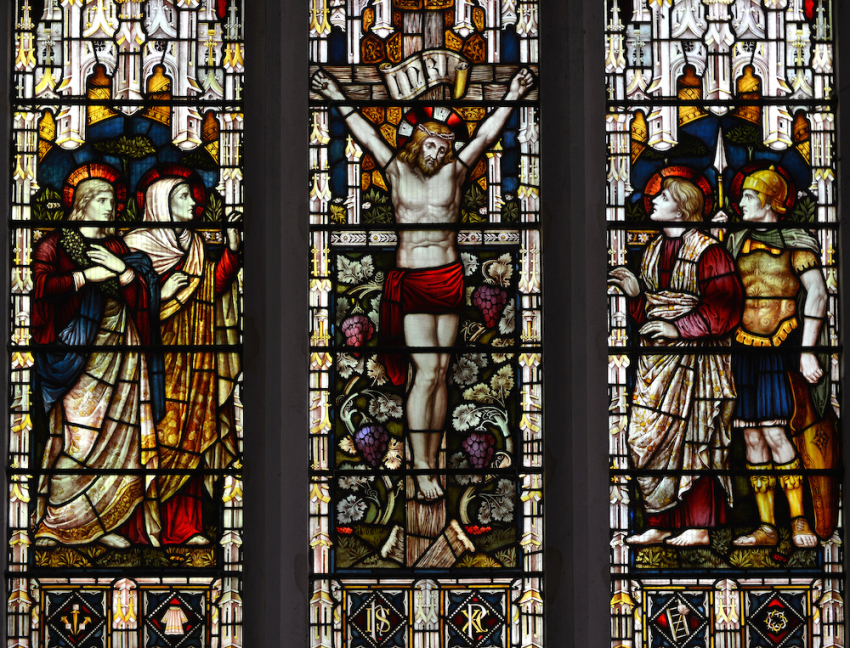Medical doctor walks through Jesus' death by crucifixion

Jesus’ birth, death and resurrection were the fulfillment of multiple Old Testament prophecies and coincided with a time period of unbridled harshness and brutality. Death by crucifixion, as described by Martin Hengel, was “a barbaric form of execution of the utmost cruelty” and as “the supreme Roman penalty.”1
It is difficult to have proper gratitude, appreciation and thankfulness for Jesus’ sacrifice without knowing the price that was paid for our salvation. Understanding the death of Jesus is also the key that unlocks our understanding of the character of God. Not only God’s love but His holiness (righteousness, justice) and His judgment are clearly revealed and confirmed by Jesus’ death and resurrection. The reason God cannot “grade on a curve,” or accept man’s attempts at reconciliation become clear at the cross.
Jesus asks His disciples to wait and pray while He finds privacy to seek the Father in prayer. A critical moment having eternal ramifications is at hand. He begins to be troubled, “My soul is overwhelmed with sorrow to the point of death... Father, take this cup from me. Yet not what I will, but what you will.”2 An angel appears in order to comfort and strengthen him. “And being in anguish he prayed more earnestly, and his sweat was like drops of blood falling to the ground.”3
Hematohidrosis is a rare disorder characterized by the secretion of blood from intact skin often in association with extreme stress or anxiety. In an attempt to explain the physiological determinants, several mechanisms have been proposed. Most medical explanations involve the sympathetic/parasympathetic nervous system interplay with resulting alterations of constriction and dilatation of blood vessels surrounding the sweat glands. The most significant commonality in all the medically reported cases, is the association with extreme mental anguish.
Jesus has a full comprehension of the severity of the upcoming scourging and crucifixion. In addition He has the added mental, psychological and emotional agony, combined with the spiritual burden, of knowing that He is to shortly become the focused sin-penalty for the full panoply of mankind’s sin and unrighteousness. Jesus knows that God the Father will soon do something never done before — turn His back on Him.
After intense scourging, multiple beatings and trauma to His head from thorns, He is led to Calvary for execution. After an agonizing, brutal, cruel, degrading and excruciating death, the soldiers come to Jesus and upon finding Him dead, thrust a spear into His side for confirmation. This added traumatic injury leaves nothing to chance. Greek word order can follow importance rather than strict chronology. Seeing blood would be important in a Jewish context of animal sacrifices whereas, water would be less important. It is likely that the “water” flowed first representing fluid (effusion) from traumatically induced water in the lung lining as a result of the severity of the scourging and possibly blunt chest trauma from falling on the road to Calvary. The effusion itself could have caused Jesus to have chest pain and shortness of breath. The ensuing blood was likely intra-chamber cardiac blood.
In 1968, archaeologist V. Tzaferis excavated a site near Jerusalem called Giv’at ha-Mivtar where a tomb was uncovered. It contained the bones of a man, estimated to be 26 years old, who had died from Roman crucifixion. The bones were found in an ossuary or bone box, that had the victim’s name, Jehohanan, inscribed several times.4
Examination showed that each one of his feet had been nailed to the cross separately and laterally, through the heel bone, and not the front of the foot. There was a nail hole, but no nail, found in the left heel bone. In the right heel bone was found a nail with the tip bent presumably from hitting a knot in the wood making it impossible to remove the nail without removing the foot, the nail and a piece of wood from the cross all together. There was an indentation on the right radius of the forearm suggesting a nail injury although this was interpreted differently by later investigators. Also the bones in the lower legs, both tibia and fibula, had been fractured.
“And I will put enmity between you and the woman, and between your offspring and hers; he will crush your head, and you will strike his heel.”5 We now have evidence in this finding of the nail penetrating the heel bone, as to allow for a literal interpretation in addition to the traditional metaphorical one. Few, if any, of the observers would realize that each blow or strike from the hammer represented Satan’s accomplishment and direct fulfillment of prophecy. To the disciples, at the time, it would have appeared hopeless. Within three days, however, the entire passage would be fulfilled. Jesus’ faithfulness, obedience and resurrection will have crushed Satan’s head!
Prior to His death, Jesus had said, “I lay down my life — only to take it up again. No one takes it from me, but I lay it down of my own accord.”6 “Jesus said, It is finished. With that, he bowed his head and gave up his spirit”7. “And when Jesus had cried out again in a loud voice, he gave up his spirit.”8
These verses taken together can be interpreted as either prescriptivistic or descriptivistic. If prescriptivistic, then Jesus makes a conscious decision. He determines volitionally to end His life at a certain point when He feels that it is finished...(pain and suffering finished, or redemption complete, or both). Jesus could say to the Father, “into your hands I entrust my spirit,” because He is supernaturally releasing His spirit and determining the exact timing of His death.
If descriptivistic, however, the utterances describe what Jesus feels. He senses and knows that something internally and catastrophic is occurring. Something feels like death is imminent.
The reason He might know this could be explained by the phenomenon of impending doom. This phenomenon can occur in individuals immediately prior to death in certain clinical situations including heart arrhythmias and heart attacks.
Jesus was fully man and fully God but He chose to voluntarily limit and not use His powers of deity outside of what was clearly the direct will of the Father. This voluntary and temporary non-use of, or limitation of, divine power is described in the second chapter of Philippians as an emptying of Himself by assuming the form of a slave and taking on the likeness of men.
His life showed that He never used His special power of deity to tend to His own pain, personal gain, comfort, convenience, or safety but rather for teaching others, showing compassion, and obeying the Father. Therefore, a natural process of death where Jesus senses the end, but doesn’t interfere to define the moment of death seems reasonable. Jesus doesn’t make the decision as to when the full price of the sin penalty has been paid, but rather defers to the Father. Jesus has spent His entire life deferring to the will of the Father and the decision concerning the exact moment of His death would likely be included in that spectrum.
Many physicians have offered explanations as to the actual cause of Jesus’ death. They include the following: cardiac rupture, cardiac tamponade, myocardial infarction, exhaustion asphyxia, hypovolemic shock, non-hemorragic shock, traumatic shock, pulmonary embolism, coagulopathy, acidosis. electrolyte imbalance. Lloyd Davies, among others, has advanced the idea that Jesus did not actually die on the cross9. What all the “swoon theories” seem to have in common, is a penchant for historical revisionism, a vivid imagination, and unrestrained medical speculation.
It is clear that Jesus had no loss of consciousness but rather retained full mentation and cognition up to the point of death. This would be highly unlikely in either exhaustion asphyxia or severe hypovolemic shock as a cause of death where mental obtundation prior to death is the rule.
He likely experienced a sense of impending doom a few seconds or minutes before His death allowing Him to cry out and make several brief statements. A consideration of all the data points in Jesus’ death would suggest that He died of a sudden acute cardiac event (probably ventricular tachycardia) in the face of severe trauma complicated by physical exhaustion (but not exhaustion asphyxia) and hypovolemia (but not severe shock.)
Conclusion:
Jesus’ faithfulness – the evidence of EASTER
Enormous price paid!
Atonement accomplished!
Salvation secured!
The value of the gift — indescribable!
Eternal blessings!
Resurrection certain!
References:
1) Hengel, Martin Crucifixion in the Ancient World and the Folly of the Message of the Cross. London and Fortress Press, 1977
2) Mark 14:33-36 NIV 1984
3) Luke 22:44
4) Hass, N. “Anthropological Observations on the Skeletal Remains from Giv’at ha-Mitvar.” Israel Exploration Journal 20 (1970), 38-59
5) Gen. 3:15
6) John 10:17,18
7) John 19:30
8) Matthew 27:50
9) Lloyd-Davies, M, Lloyd-Davies TA, “Resurrection or Resuscitation?” J R Coll Physicians Lond 991 Apr;25(2):163-170
Larry H. Lytle, MD is a graduate of the Ohio State College of Medicine. He completed his internal medicine residency at Riverside Methodist Hospital in Columbus, Ohio. He is the founder of Worthington Medical Center and has served as the council chairperson for the Columbus/Central Ohio chapter of the Christian Medical and Dental Associations.



























